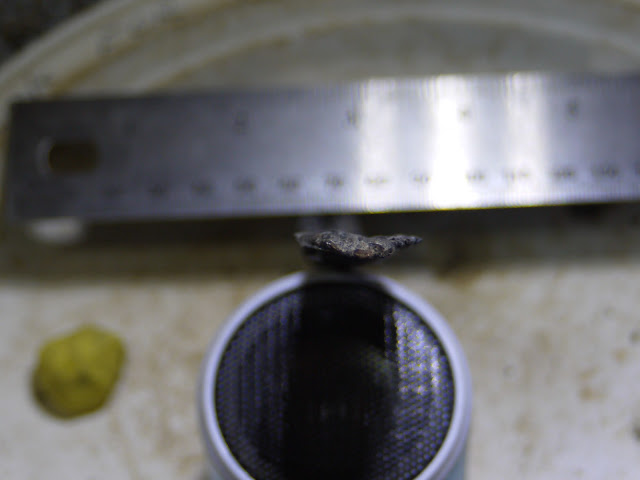Time keeps ticking away in the ol' quarry, and I keep taking out bones. I've gone back to block 2, the one the skull came out of, having mostly disposed of block 3. Block 3 is down to no visible bones so I thought I'd change. Block 2 still has over 30 bones showing on the surface, enough for a year's work or more.
I have sent off about 15 bones to Alaska, a whole mix. Two in the last shipment, and another currently here in Oregon, are worth mentioning. As 'the first shall be last', I'm commenting on the latest bone. It's an interclavicle (sternum or breastbone to us laymen). This is the first sternum we have found! These bones are "T" shaped, although one side of the top of the tee is broken off. The bone grain clearly shows the bone curve, and the center is very symmetrical and even has a great ridge running down the center. The bone is about 145 mm long, and the fin is very thin - about 2 mm thick at the end. And the bone was broken in many places with missing parts. So with many hours of work it is now close to what is was 230 million years ago.
Outside view .
End view
Inside view
We also have a nice limb bone. It is very solid, but the end was broken off before burial. So I think it is a good candidate for sectioning and a bone structure study.
Now here is the most important news - we have found a osteoderm - a skin armor plate! It is nice shape, great rough surfaces, pits on the surface and everything you expect in this type of bone. And the rest of the story - no thalattosaurs have ever been found with osteoderms!!! This means one of two things: 1) We have the first thalattosaur with Osteoderms - or - 2) We have another species of Triassic Reptile in this mix of bones !!! Either way, this is really great!
The inside of the bone - rather smooth (at least in comparison to the other side).
The exterior side of the bone - rough and pitted.
The very convoluted, very Rugose edge.
Sincerely, Greg Carr












